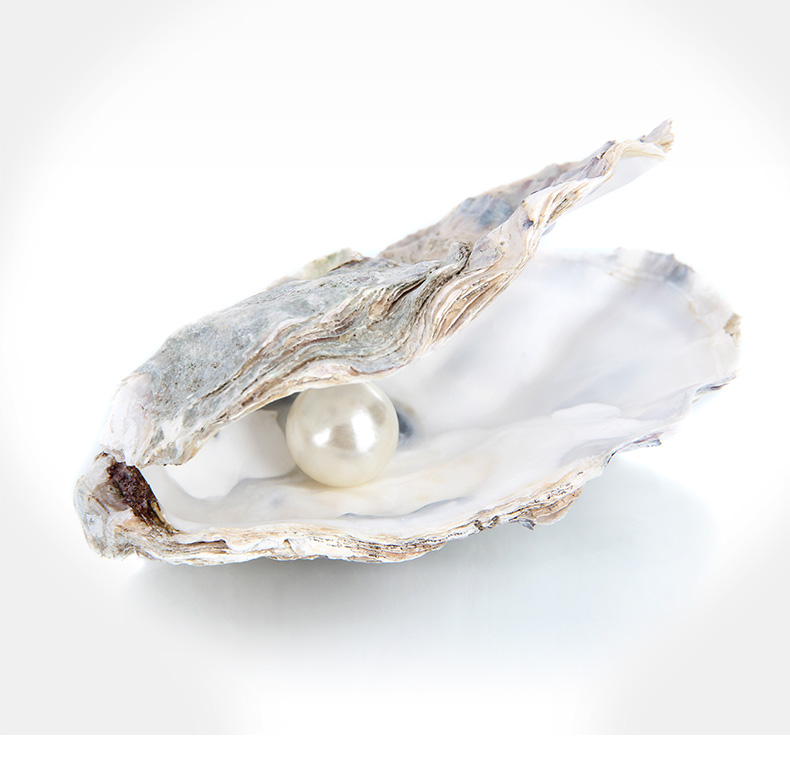
The pearl is one of the most important gemstones in the manufacture of high-quality accessories, even though the pearl is not a stone in the true sense of the word, but has a crystalline structure of calcium carbonate in the form of aragonite and calcite. Pearls are divided into genuine pearls, cultured pearls and imitation pearls. In addition, the cultured pearls are once again divided into seawater and freshwater pearls. A genuine pearl grows in a mollusc as a foreign body, whereby no human intervention is necessary. This type of pearl is the rarest and therefore the most expensive if it is to be used as jewellery. In cultured pearls, the mussels are implanted with implants, a so-called nucleus, which then grow into pearls in the mussel. Freshwater pearls do not have this nucleus. Finally, imitation pearls are made of plastic or glass and then given a pearl look. These pearls do not belong to the group of pearls. In order to determine the quality of a pearl, the following criteria are used: shape, size, luster (pearl luster), surface quality, colour, type of pearl and the thickness of the mother-of-pearl. For pearls to be threaded, the quality of the bore is also of interest.
Already grandma did not want to miss her pearl necklace. Pearls can be combined with various materials and always look stunning. Whether it be a single pearl as a pendant or a bracelet made of different colored pearls, with this jewellery you can do nothing wrong. Since pearls are natural products, you should give them a special care.
Correct care for pearl jewellery
Pearls are natural products and require a little care. The following paragraphs provide information on the correct handling.
Pearls come from the sea and love humidity
Pearls consist essentially of the mineral aragonite and the organic conchiolin that holds the aragonite crystals together. In addition, each pearl contains a certain amount of water in its crystal structure. It is therefore very important to protect your pearl jewellery from drying out. It is advisable to wipe the piece of jewellery with a damp cloth once after each wear and also, if you do not wear your jewellery for a longer period of time, to work on it occasionally with a damp cloth. However, you should not wear your pearls when showering or bathing, as too aggressive shampoos or shower gels can damage your jewellery.
Cleaning rings, earrings and pearl pendants
For unknotted pearl jewellery it is usually sufficient to put the jewellery under lukewarm water once a month and clean it with a gentle detergent. It is important to make sure that the pearls do not come into contact with corrosive or rough materials, as this destroys the typical pearl luster. Also ultrasonic baths are not suitable for this jewellery, since the surface of the pearls could get cracks through the vibration.
Cleaning pearl necklaces and pearl bracelets
Necklaces and bracelets often have a silk ribbon that holds the pearls together. This makes the care a little more difficult, as it can become brittle and tear if it comes into frequent contact with water. The best option with these pieces of jewellery is to bring them to a professional every two to three years and have them professionally prepared. This is a bit more expensive, but guarantees that you will enjoy your jewellery for a long time.
Storing pearls
Storing pearl jewellery is best done separately from other types of jewellery in a separate box or cloth bag. Metals, such as silver or stainless steel, are harder and could damage the surface of the pearls. It is also advisable to ensure that your pearls are not stored airtight, for example in a plastic bag. Pearls also draw the much-needed moisture from the air.
